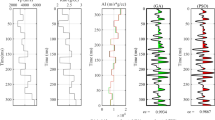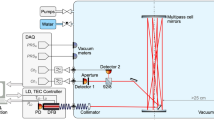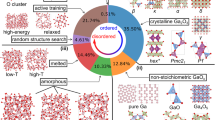Abstract
THE list of known terms of GaI as compiled by Bacher and Goudsmit1, while not very extensive, constitutes the best data so far available. Of this, the series terms are based on Fowler2, Paschen-Götze3, and measurements of Uhler and Tanch4; the only other terms quoted, namely, 4s4p2 2S and 4P, are from Sawyer and Lang5.
This is a preview of subscription content, access via your institution
Access options
Subscribe to this journal
Receive 51 print issues and online access
$199.00 per year
only $3.90 per issue
Buy this article
- Purchase on SpringerLink
- Instant access to full article PDF
Prices may be subject to local taxes which are calculated during checkout
Similar content being viewed by others
References
“Atomic Energy States” (McGraw-Hill, New York, 1932).
“Report on Series in Line Spectra” (London, 1922).
“Seriengesetze der Linienspektren” (Springer, Berlin, 1922).
Uhler, H. S., and Tanch, J. W., Astrophys. J., 55, 291 (1922).
Sawyer, R. A., and Lang, R. J., Phys. Rev., 34, 712 (1929).
Garton, W. R. S., Nature [166, 150 (1950)].
Author information
Authors and Affiliations
Rights and permissions
About this article
Cite this article
GARTON, W. Arc Spectrum of Gallium: New Absorption Lines in the Schumann Region. Nature 166, 317–318 (1950). https://doi.org/10.1038/166317a0
Issue date:
DOI: https://doi.org/10.1038/166317a0
This article is cited by
-
A beam-foil study of lifetimes and level excitations in gallium and thallium
Zeitschrift für Physik A Atoms and Nuclei (1981)



